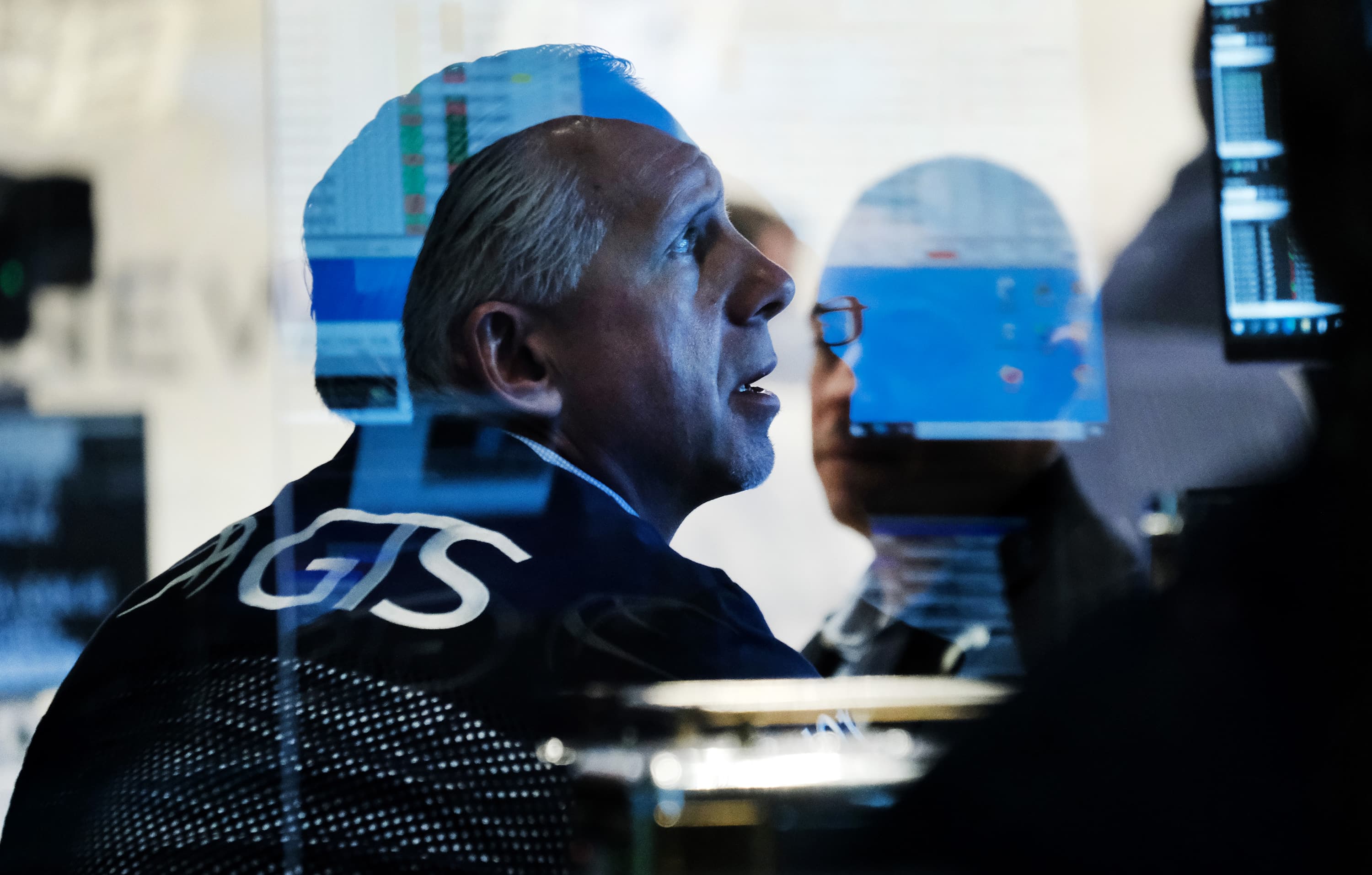Dow jumps 300 points on first day of December as volatility sparked by omicron variant continues

U.S. stocks rose on Wednesday morning as companies that benefit from the economic reopening gained along with big energy and pharma.
The Dow Jones Industrial Average rose 310 points, while the Nasdaq Composite and S&P 500 each rose more than 1%.
The gains follow a Tuesday sell-off on Wall Street over fears about the new omicron Covid variant and the Federal Reserve mulling a quicker-than-planned exit from its easy monetary policy.
Treasury yields also moved notably higher, with the benchmark 10-year Treasury note most recently back near 1.5% after falling 8 basis points Tuesday to 1.45% on fears that the pandemic would stifle economic growth.
Merck led gainers on the S&P 500, rising 4% in premarket trading a day after its Covid treatment pill received approval from the Food and Drug Administration, though by a narrow 13-10 margin.
Energy shares also posted sharp gains, with Occidental Petroleum up 3.4% as West Texas Intermediate prices climbed more than 4% to nearly $69 a barrel.
Elsewhere in early trading, stocks associated with the economic reopening also posted strong gains. Carnival was up 2.9%, Wynn Resorts gained 2.6% and Hilton Worldwide saw a 2.8% gain.
The moves came a day after the Dow lost more than 650 points, the S&P 500 shed 1.9% and the tech-focused Nasdaq Composite dipped 1.6%. The small-cap benchmark Russell 2000 tumbled 1.9% as cyclical names dragged on the markets.
“Our sense is that the recent selloff is a longer-term buying opportunity. However, investors that want to avoid a potential big drawdown (while giving up some potential upside) may want to wait until the [Fed’s] Dec. 15 meeting,” Wolfe Research strategist Chris Senyek said in a note to clients.
Fed Chairman Jerome Powell jolted markets after he said the central bank is expected to discuss speeding up the taper of its minimum $120 billion a month bond-buying program. Despite the potential disruption of omicron, the Fed chief said he thinks reducing the pace of monthly bond buys can move quicker than the $15 billion-a-month schedule announced earlier this month.
“At this point, the economy is very strong and inflationary pressures are higher, and it is therefore appropriate in my view to consider wrapping up the taper of our asset purchases … perhaps a few months sooner,” Powell said. “I expect that we will discuss that at our upcoming meeting.”
Goldman Sachs said it projects the Fed will double the pace to $30 billion a month and enact its first rate hike of the pandemic era in June.
The major averages have seen several volatile sessions, starting last Friday when the Dow Jones Industrial Average experienced its worst day since October 2020. Stocks rebounded on Monday, only to turn downward again on Tuesday.
Wednesday marks the first trading day of the final month of 2021.
Expediting the removal of the Fed’s easy policies tells investors that the central bank is focusing on addressing inflation, instead of new threats from the pandemic.
“Markets appear to be having trouble digesting the combo of elevated uncertainty around the impact of the Omicron variant and a hawkish Fed pivot in the context of persistently elevated inflation,” said Gregory Daco, chief U.S. economist at Oxford Economics.
The new Covid variant, first detected in South Africa, has now been identified in more than a dozen countries, causing many to restrict travel. Denting sentiment on Tuesday, the Moderna CEO told the Financial Times that he expects existing vaccines to be less effective against the new variant.
Stocks wrapped up a volatile month of trading on Tuesday. The Dow lost 3.7% for its second month of losses in three. The S&P 500 fell 0.8%, while the Nasdaq Composite gained 0.25% in November. The Russell 2000 shed 4.3% in November, its worst month since March 2020.
Still, the major averages are up solidly for the year. The Dow is up 12.7% and the S&P 500 is up 21.6% in 2021. The Nasdaq Composite is up an impressive 20.6% this year.
ADP’s private payroll data for November showed 534,000 jobs added in November, above expectations of 506,000
On Wednesday, investors will be evaluating updates on the omicron variant, as well as some key economic reports. November’s Manufacturing PMI, ISM Manufacturing print and October’s construction spending are set to release on Wednesday morning.




